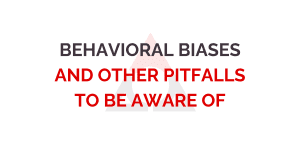While most people were unplugged, enjoying the holidays with friends and family, our elected representatives were busy pushing through a last-minute retirement bill called the SECURE Act 2.0. As was the case with its predecessor, The SECURE Act of 2019, there are several major changes to the retirement planning landscape as a result of this legislation. Below we will overview a number of the notable changes to be aware of.
Required Minimum Distributions
With the passage of SECURE 2.0, the required minimum distribution age that savers must begin taking forced withdrawals from retirement accounts is getting pushed back. Those born between the years of 1951-1958 will be required to start taking minimum distributions the year they attain age 73, and those born after 1959 will be required to begin at age 75.
Additionally, Roth employer plan monies will no longer be included in RMD calculations for assets that remain in employer plans. Previously, the IRS would look at the full balance to determine an RMD for employer plan assets while Roth IRA balances were excluded from the calculation for IRA accounts.
Beginning in 2023, the penalty for missing an RMD will be reduced from 50% of the missed amount to 25%. If the mistake is corrected in a timely manner, that penalty is reduced further to 10%.
529-to-Roth IRA Transfers
A surprise addition to the bill was the ability to roll over excess 529 funds to a beneficiaries Roth IRA. This will undoubtedly impact the conversation around 529 funding and provide a new planning opportunity to overfunded 529 plans.
A few items to note about this strategy:
- The transfer can only be made to the 529 beneficiary
- The account must have been maintained for 15+ years before transfers are allowed (begin funding your newborns 529 right away to start the clock)
- The transfers are subject to annual contribution limits ($6,500 in 2023)
- The lifetime max that can be transferred is $35,000
- You can’t transfer funds that have been contributed in the last 5 years
Employer Plan Updates
Historically, SEP and SIMPLE IRA’s have only been available in pre-tax form. Section 601 of the bill adds the ability to make Roth contributions to these account types.
Additionally, Section 604 allows employers to make matching contributions and non-elective contributions to the Roth source. Participants who elect to receive a Roth match will be taxed on match money as income.
Catch-up contributions for 401(k) and similar employer plans will begin to be subject to cost of living adjustments (COLAs) starting in 2024. Additionally, a larger catch-up contribution of $10,000 or 150% of regular catch-up contribution amount will be available to those between the ages of 60-63 beginning in 2025.
Section 603 requires that all catch-up contributions into employer plans be made as Roth contributions if prior year wages exceeded $145,000.
Section 110 will allow plans to treat student loan payments as contributions to the plan for matching purposes. The match amount and vesting must remain consistent with contributions and the payments must be verified by the employer.
Qualified Charitable Distributions
There are two changes to QCD’s as a result of SECURE 2.0. Historically, the amount has remained constant year to year but starting in 2024 a COLA will be applied to the limit each year.
Additionally, individuals will be able to make a QCD of up to $50,000 to one of the following:
- Charitable Remainder Trust (CRUT)
- Charitable Annuity Trust (CRAT)
- Charitable Gift Annuity
Inherited Retirement Accounts
Section 327 of the bill allows a surviving spouse to take RMDs from a deceased spouse’s IRA as if they were the deceased spouse starting in 2024. This means they can delay RMDs and use the more favorable Uniform Lifetime Table to calculate RMDs.
One notable item that is missing from the legislation is whether RMDs will be required annually during the 10 year rule.
With any legislation that is 4,000 plus pages, not all items could be covered but this is an overview of many of the most notable changes. If you’d like to have an introductory call to discuss your situation with our team click here to schedule a call.
If you’d like to sign-up for our monthly newsletter with four high-quality, financial planning focused posts per month, click here.




